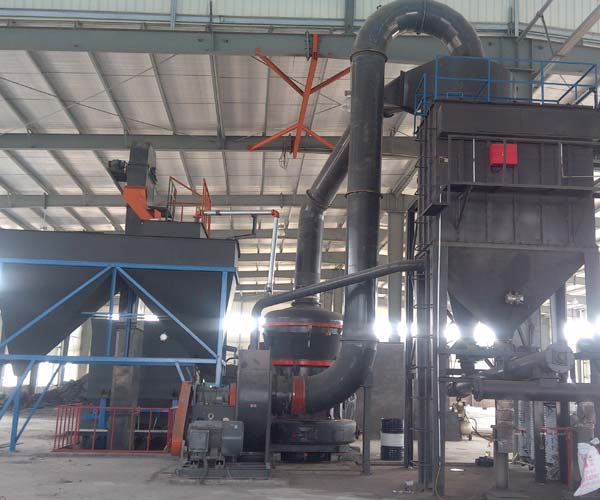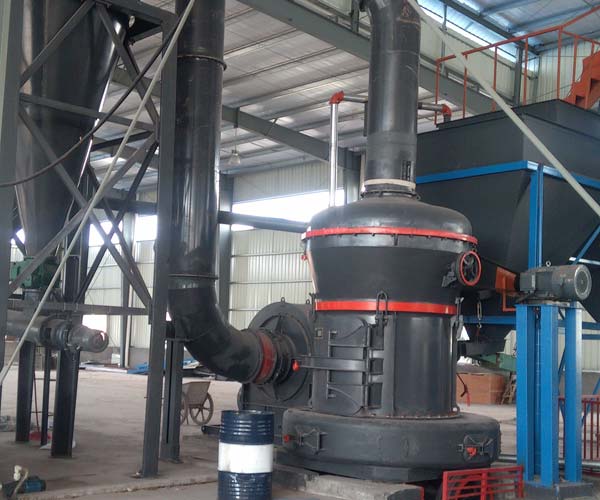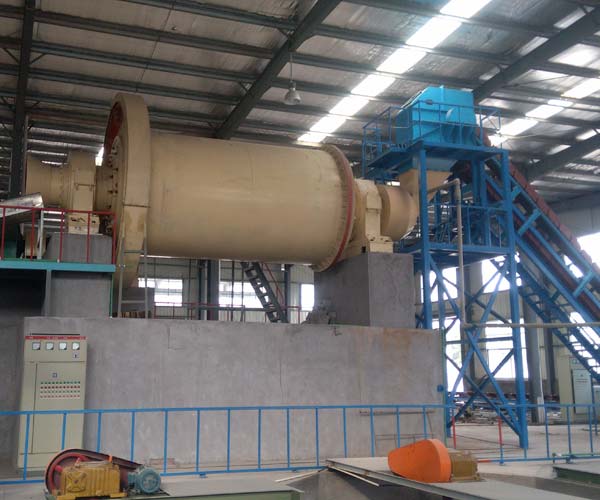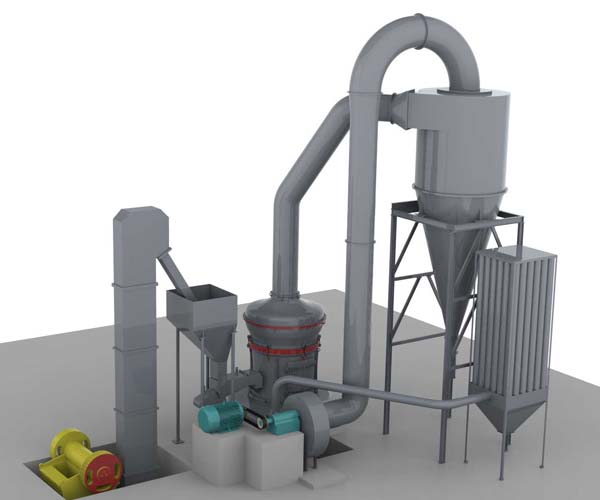
Grinding mills in material processing, particularly in the production of calcite powder, is of paramount importance. These mills facilitate the transformation of raw calcite into a finely ground powder with controlled particle sizes, improved reactivity, and enhanced quality.
24 Online Service

The exceptional properties of calcite have made it a sought-after mineral in numerous applications across different industries.
Calcite is known for its acid-neutralizing properties, which are crucial in applications such as agriculture and water treatment. When added to acidic soils, calcite acts as a pH buffer, helping to regulate soil acidity and create favorable conditions for plant growth. Similarly, in water treatment, calcite can be used to neutralize acidic water, preventing corrosion and ensuring the water’s safety for consumption.
Calcite’s abundance and durability have made it a valuable resource in the construction industry. As a principal component of limestone and marble, calcite provides strength and aesthetic appeal to buildings and monuments. Its ability to take a high polish makes it a favored choice for decorative purposes, such as sculptures and architectural features.
Calcite’s fine-grained and white appearance make it an excellent mineral filler in various products. In the paper industry, calcite is used as a filler and coating material, enhancing paper’s opacity, brightness, and printability. It is also used in the production of paints, plastics, and rubber, where its properties contribute to improved texture, color retention, and overall product quality.
Whether it’s the creation of finely ground materials for production or the shaping of objects to precise dimensions, grinding plays an integral role. However, the journey towards achieving the desired outcomes begins long before the grinding wheel meets the material.
Proper preparation encompasses a series of critical steps that ultimately determine the quality, efficiency, and safety of the grinding process.
At the heart of successful grinding lies the raw material.The process begins with the careful selection and gathering of high-quality calcite rocks or raw materials. Quality here refers not only to the physical properties of the material but also its suitability for the intended purpose.
To begin, one must have a thorough understanding of the requirements of the end product. Factors such as hardness, granularity, and chemical composition should guide the selection process. Gathering raw materials from reputable sources ensures consistency and minimizes variations that can negatively impact the grinding process. In cases where the raw material needs to be mined, ethical and sustainable practices should be upheld to minimize environmental impacts.
Once the raw material has been procured, the next crucial step is cleaning and sorting. This phase might be overlooked, but its significance cannot be overstated. Raw materials, especially those sourced from natural deposits, often carry impurities, contaminants, and unwanted materials. Neglecting to remove these impurities can lead to subpar grinding results, increased wear on equipment, and reduced product quality.
The cleaning process involves the removal of dirt, dust, organic matter, and any foreign particles that may have adhered to the raw material. Depending on the scale of operations, this can be achieved through techniques such as washing, sieving, and air blowing. Proper cleaning not only improves the efficiency of the grinding process but also contributes to the longevity of the grinding equipment.
Sorting is equally vital. Different sizes of raw material particles can impact the consistency of the grinding process and the quality of the end product. In some cases, sorting might involve separating the material into different size fractions, ensuring uniformity in the grinding process. Advanced sorting technologies, such as optical sorting machines, have become valuable tools for achieving precise and efficient separation.

In the world of industrial processing, the transformation of raw materials into valuable products often requires intricate processes that involve various stages of refinement. Among these processes, the role of grinding mills stands out as a crucial step in achieving the desired product characteristics. Grinding mills are fundamental machines utilized in material processing, designed to break down solid materials into smaller particles through mechanical force.
Grinding mills play an integral role in numerous industries, ranging from mining and metallurgy to food processing and pharmaceuticals. The primary objective of grinding mills is to reduce the size of particles within a material, resulting in increased surface area and improved reactivity. This process enhances the material’s suitability for various applications by altering its physical and chemical properties. Grinding mills achieve this reduction in size through mechanical force, such as impact, compression, or attrition.
One of the key benefits of using grinding mills is the ability to control particle size distribution. This control ensures consistent product quality and optimal performance in downstream processes. Depending on the specific requirements of the end product, different types of grinding mills are employed.
Calcite, a naturally occurring calcium carbonate mineral, finds extensive use in industries such as plastics, paints, paper, ceramics, and construction due to its remarkable properties. The transformation of raw calcite into finely ground powder necessitates the application of specialized grinding mills. Several types of grinding mills are commonly used for calcite powder production:
Ball mills are perhaps the most common type of grinding mill used for calcite powder production. They operate by rotating a cylinder filled with grinding media such as steel balls, causing the material to be ground to a desired fineness. The degree of grinding can be adjusted by varying parameters like rotation speed, ball size, and material feed rate.
Raymond mills, also known as pendulum mills, rely on the rotation of a central shaft with multiple arms holding grinding rollers. These rollers apply pressure to the material as it passes between them and a stationary grinding ring. Raymond mills are particularly effective for fine and ultra-fine grinding.
Vertical roller mills consist of a rotating table equipped with rollers that apply pressure to the material, causing it to be crushed and ground against a stationary surface. VRMs are known for their energy efficiency and ability to produce consistent particle sizes.
Hammer mills operate with rotating hammers that strike the material to be ground. The impact generates fractures in the material, reducing it to the desired particle size. Hammer mills are suitable for coarse grinding and are often used to break down larger calcite crystals.
Ultrafine grinding mills are designed to produce extremely fine particles, often in the micron or even nanometer range. They utilize high-speed impact or attrition to achieve the desired particle size reduction.
Calcite powder, with its diverse applications, relies heavily on the processing methods employed to achieve the desired characteristics. Raw calcite, extracted from natural deposits, contains varying particle sizes and impurities that need to be eliminated for specific end uses. A grinding mill is indispensable in this process due to several compelling reasons:
The ability to control particle size is crucial in calcite powder production. Different applications demand specific particle sizes to ensure optimal performance. Grinding mills allow manufacturers to finely tune the particle size distribution, meeting the precise requirements of various industries.
The mechanical forces applied by grinding mills lead to increased surface area of the particles. This heightened surface area improves the reactivity of the material, making it more suitable for chemical reactions, coatings, and other applications.
Raw calcite often contains impurities that can negatively impact the quality of the end product. Grinding mills not only reduce the particle size but also aid in removing impurities through processes such as attrition and abrasion.
Grinding mills ensure uniformity and consistency in the final product, eliminating variations in particle size that could adversely affect the performance of calcite powder in different applications.
Different types of grinding mills offer the flexibility to tailor the properties of the final product. By selecting an appropriate grinding mill and optimizing process parameters, manufacturers can achieve desired attributes such as brightness, opacity, and rheological behavior.

Among these processes, grinding stands out as a crucial technique that shapes raw materials into the fine powders that underpin countless industries.
The journey begins with the raw material – calcite, a mineral with diverse applications ranging from construction to medicine. Before it can be transformed into the fine powder that holds immense value, the calcite must undergo an initial breaking down. This step prepares the raw material for further refinement and enhances the efficiency of the subsequent processes. Typically, mechanical crushers are employed to achieve this. These machines exert immense force to reduce the size of the calcite chunks, turning them into manageable fragments that are ready for the grinding mill.
Once the calcite has been broken down into smaller pieces, the next step involves carefully feeding these fragments into the grinding mill. This process demands precision, as the uniformity of the feed significantly impacts the quality of the final product. The grinding mill, often a cylinder-like apparatus equipped with grinding media, receives the calcite fragments. These grinding media, such as balls or rods, interact with the calcite, applying forces that lead to further size reduction through attrition and impact.
Within the grinding mill, the calcite fragments embark on a transformative journey, undergoing a series of processes that progressively refine them into the desired fine powder. This journey can be divided into three main phases: crushing, grinding, and classification.
As the calcite fragments interact with the grinding media, they experience crushing forces that break down the larger pieces into smaller particles. This step further reduces the size of the calcite, enhancing its surface area and exposing more of its internal structure.
In this phase, the calcite particles continue to be subjected to grinding forces as they move within the mill. The collisions between the particles and the grinding media generate friction and impact, leading to further reduction in size. The grinding process is vital for achieving the desired fineness of the calcite powder, which influences its reactivity, solubility, and overall performance in various applications.
As the grinding progresses, a mixture of particles with varying sizes emerges. To ensure the uniformity and consistency of the final product, a classification step becomes necessary. Classifiers within the grinding mill segregate particles based on their sizes, ensuring that only particles of the desired size range proceed further while the rest are recirculated for additional grinding. This iterative process helps achieve the precise particle size distribution required for specific applications.
Having navigated through the intricate dance of crushing, grinding, and classification, the calcite particles finally attain their finely powdered form. At this stage, the transformed calcite is ready to be collected and used across a spectrum of industries. Collection methods vary based on the type of grinding mill and the specific requirements of the application. Often, collection systems such as cyclones or filters are employed to efficiently gather the calcite powder as it exits the grinding mill. These systems separate the fine powder from the remaining air and particulate matter, ensuring that the valuable product is captured while minimizing waste.
Our Projects
Copyright © ZENITH, All Right Reserved.
